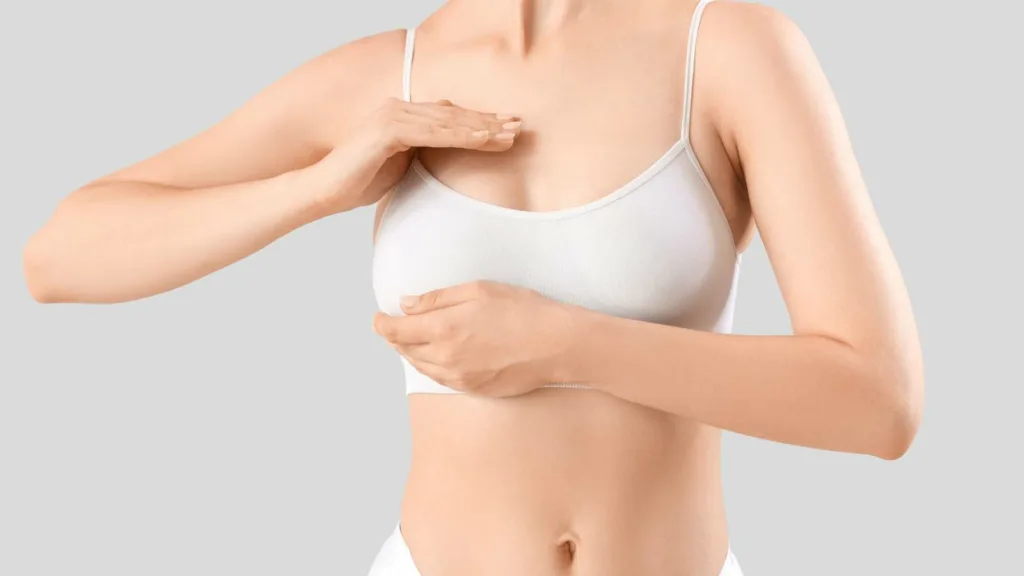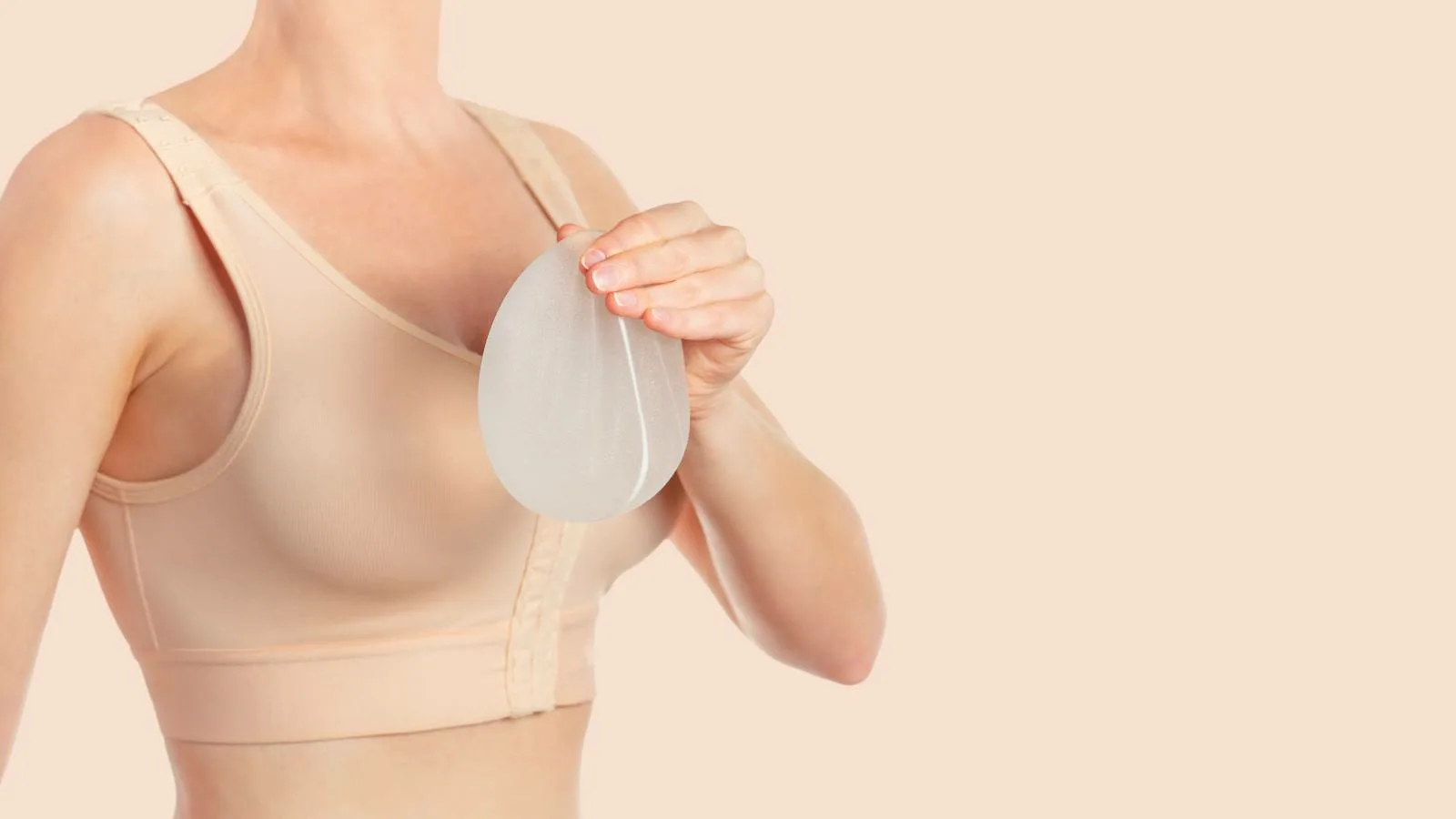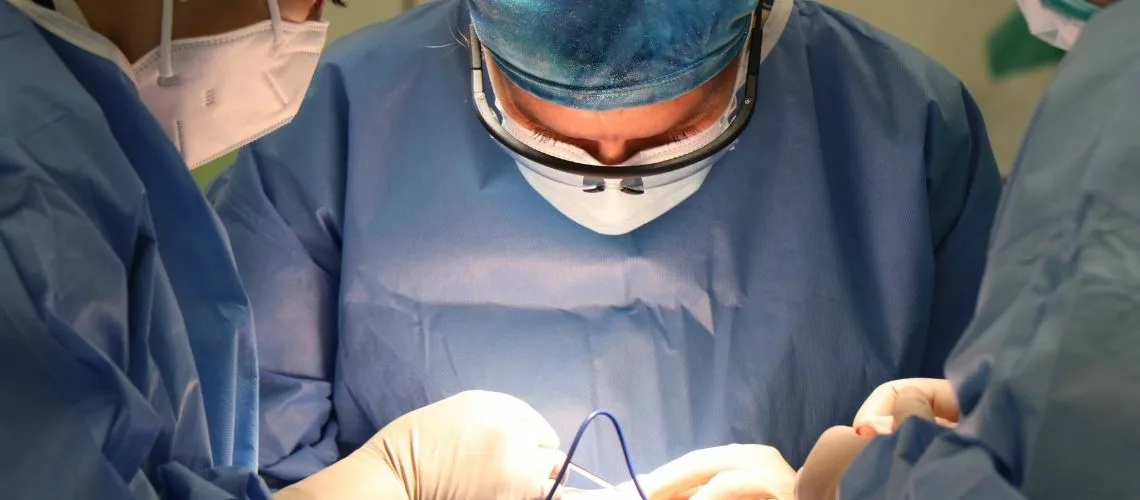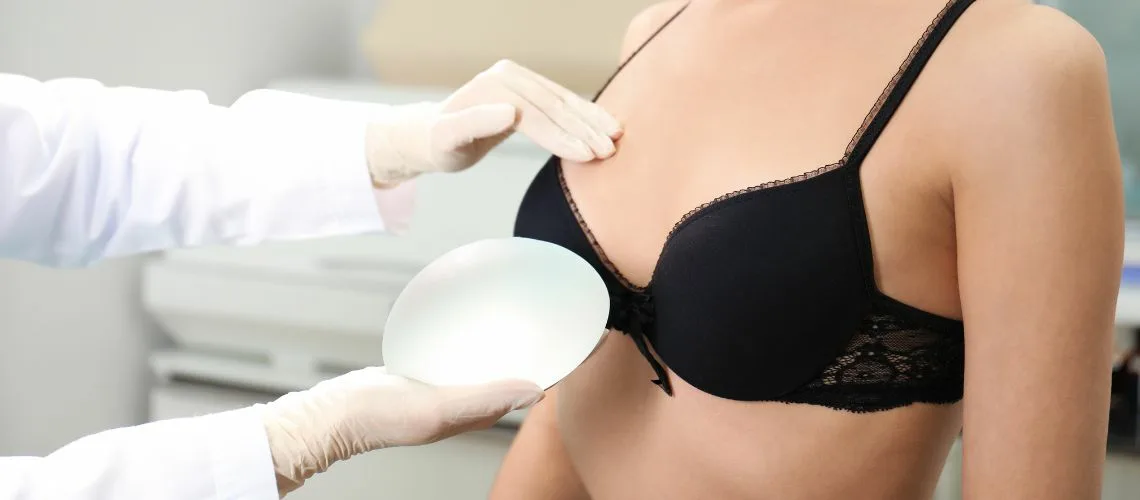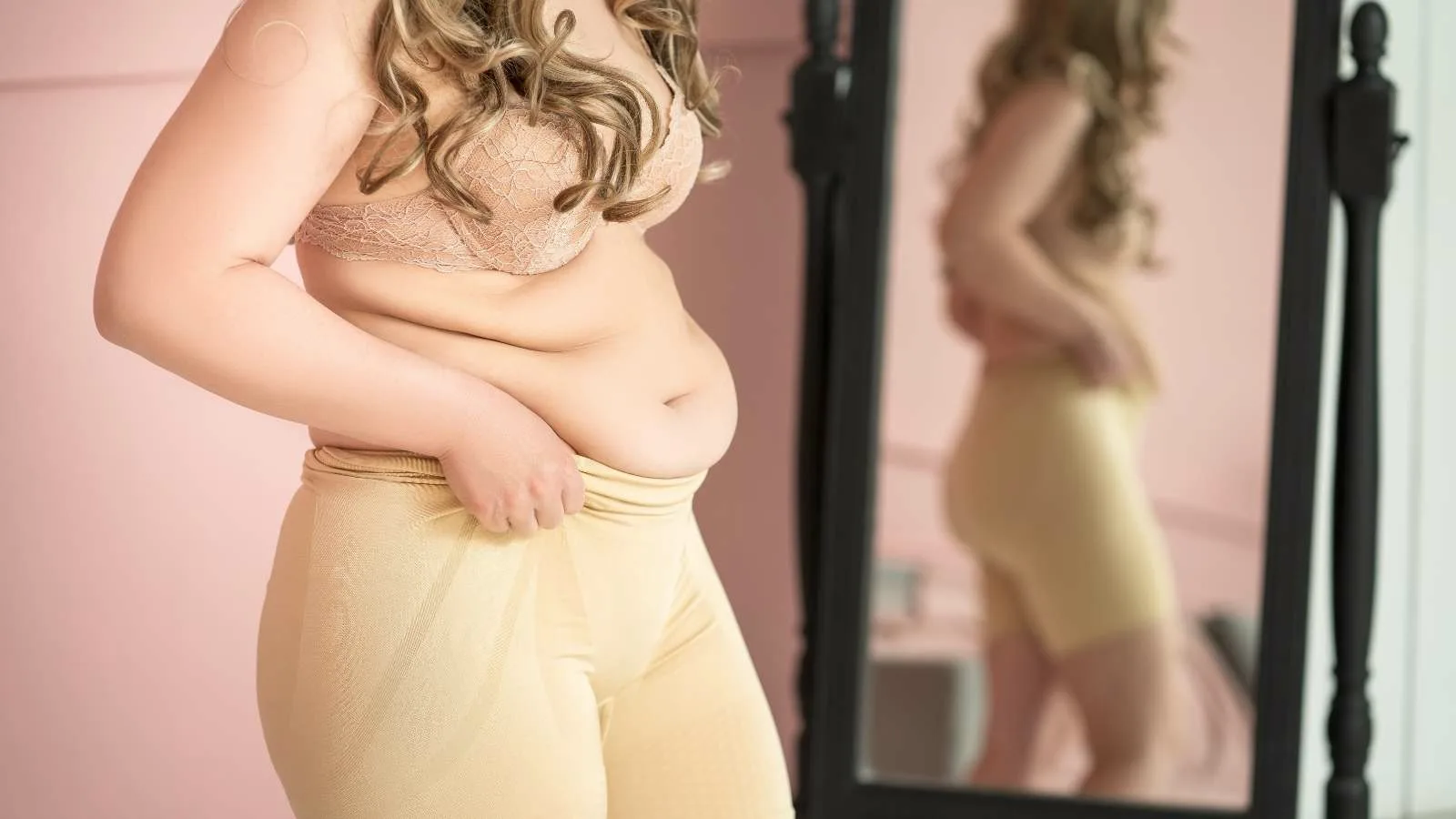False breast sagging refers to the appearance of drooping breasts without actual tissue descent. Instead, this condition results from reduced upper pole fullness, skin elasticity loss, or implant-related changes.
The main cause of false breast sagging is volume distribution rather than true glandular descent. Breasts may appear low or flat at the top, even though the nipple remains in normal position.
Treatment of false breast sagging typically involves breast augmentation with implants or fat transfer. By restoring upper pole fullness, the breasts achieve a lifted and youthful appearance without requiring a lift.
Accurate diagnosis of false breast sagging is essential to choose proper treatment. A detailed examination determines whether a lift, augmentation, or combined procedure is required for optimal results.
| Definition | Despite the nipple being in the correct anatomical position, the lower part of the breast sags down due to loss of skin elasticity. |
| Causes |
|
| Symptoms |
|
| Diagnosis |
|
| Treatment Methods | Non-Surgical Methods: Skin collagen-boosting procedures or supportive bras. Generally of limited benefit for moderate to severe cases.
Surgical Methods:
|
| Suitable Candidates |
|
| Risks & Complications |
|
What Is Pseudoptosis (Yalancı Meme Sarkıklığı)?
Pseudoptosis (also called “yalancı meme sarkıklığı”) refers to the sagging of the lower breast pole, while the nipple-areola complex (NAC) remains around or above the inframammary fold (IMF). The key hallmark of pseudoptosis is that the nipple does not descend below the IMF level.
According to medical literature, pseudoptosis is verified if the nipple stays at or above the inframammary fold level, and any apparent droop is concentrated mainly in the breast’s lower portion. Think of it like a coat hanger whose hook (the nipple) is still in place, but the bottom part has stretched downward.
What Are the Treatment Options for Pseudoptosis of the Breast?
Pseudoptosis of the breast refers to a condition where the lower part of the breast appears to sag, even though the nipple remains in its normal position.
This condition is usually associated with volume loss or excess skin.
Treatment is determined based on aesthetic expectations and breast structure. Here are the common treatment options:
- Breast Augmentation (Implant Placement): Silicone implants are used to restore lost volume and give the breast a more lifted appearance.
- Fat Injection: Fat tissue taken from the patient’s own body can be used to increase breast volume.
- Breast Lift (Mastopexy): In necessary cases, excess skin is removed to reshape and lift the breast.
- Combined Procedures: In some patients, implants and lifting can be performed together.
How Does Pseudoptosis Differ From True Ptosis?
The main distinction between pseudoptosis and true ptosis lies in the nipple position.
True Ptosis (Actual Sagging):
- The nipple descends below the inframammary fold.
- Breast tissue overall shifts downward, with upper pole emptiness and lower pole droop.
- Visibly, the nipple is noticeably lower than normal.
Pseudoptosis (Yalancı Sarkma):
- The nipple remains at or above the inframammary fold.
- The sagging is chiefly in the lower pole, creating a “stretched” look under the nipple.
- The upper pole is often deflated or less voluminous, but the nipple itself isn’t significantly displaced downward.
How Is Pseudoptosis Diagnosed?
A thorough clinical evaluation helps determine whether someone has pseudoptosis:
- Physical Examination: The doctor checks if the nipple is positioned above or below the inframammary fold and assesses whether the lower breast portion appears stretched out.
- Measurements & Photography: Documenting distances (e.g., from collarbone to nipple) can help track changes and plan treatments.
- Patient History: Weight fluctuations, pregnancies, breastfeeding duration, genetic predisposition, or any prior breast surgeries are reviewed.
- Ruling Out True Ptosis: If the nipple stays at or above the IMF, it points to pseudoptosis rather than full ptosis.
What Causes Pseudoptosis?
Pseudoptosis typically arises from a blend of factors, including:
- Aging & Reduced Skin Elasticity: Over time, collagen and elastin fibers degrade, making tissues less able to support the lower breast portion.
- Weight Fluctuations: Repeated gain/loss cycles stretch and relax the skin, potentially leading to extra skin that droops in the lower pole.
- Pregnancy & Breastfeeding: After pregnancy-related enlargement and subsequent glandular shrinkage, the skin might not contract fully, leaving the lower pole “hanging.”
- Structural or Genetic Factors: Some people naturally have a relatively more extended lower breast pole or tissues prone to quicker sagging.
- Previous Breast Surgeries: Certain surgical techniques or suboptimal healing can predispose the lower breast region to droop again over time.
Non-Surgical Options for Pseudoptosis
Not every case of pseudoptosis requires surgery. Mild cases—or those not severely impacting one’s appearance or comfort—can sometimes be addressed with less invasive methods:
- Proper Bra Selection: A well-fitted bra (or sports bra) offers extra support to the lower pole, minimizing the drooping effect.
- Exercise & Muscle Strengthening: Strengthening the pectoral and back muscles can lift the chest area slightly, although it won’t directly tighten breast skin. Nonetheless, better posture and supportive musculature can visually diminish sagging.
- Topical Creams & Skin Care: Certain products purport to boost collagen, but typically only provide minor improvements. They can maintain skin hydration, offering a slightly firmer feel.
- Radiofrequency, Laser, or Ultrasound Treatments: These methods can improve skin tightness by stimulating collagen production. However, the breast—being a mobile and delicate region—may not respond as dramatically as the face or other body areas.
- Weight Management & Lifestyle Adjustments: Avoiding large, rapid weight fluctuations helps maintain skin elasticity. A balanced diet, hydration, and quitting smoking also support healthier breast tissue.
Surgical Approaches for Pseudoptosis
If a patient’s pseudoptosis is more pronounced, or if less invasive measures aren’t meeting expectations, surgery may be a viable solution. Unlike true ptosis surgery, these procedures often focus on reshaping or adding support to the lower portion of the breast rather than elevating the nipple significantly.
- Breast Augmentation (Implants) for Lower Pole Fulness: If the patient has smaller overall volume and a deflated lower breast, placing an implant can fill out the lower portion. With dual-plane techniques, the implant partly sits under the chest muscle and partly under breast tissue, creating a natural projection.
- Mastopexy (Breast Lift) Techniques: Excess skin in the lower portion can be removed, and the breast tissue can be reshaped. If the patient doesn’t require raising the nipple substantially (as is the case in real ptosis), a mini lift or lower-pole resection might suffice.
- Minor Elevation & Special Techniques: Techniques like “B Mastopexy” or “Periareolar Mastopexy” may target the lower breast area specifically, removing excess skin around or below the areola.
- Fat Grafting (Lipofilling): Transferring fat from another body area to the lower breast helps restore volume and improves overall shape. However, some of the injected fat may be reabsorbed, and results can vary by individual.
When Is Surgery Indicated?
Deciding whether surgery is necessary typically hinges on:
- Severity of Sagging: Noticeable drooping in the lower pole that affects day-to-day comfort or self-confidence.
- Patient’s Expectations: If the person is significantly bothered by breast appearance and simpler methods have failed, surgery can provide longer-lasting correction.
- Physical Discomfort or Skin Issues: Sweat accumulation, rashes, or infections below the breast can prompt a surgical approach.
- Unsuccessful Non-Surgical Methods: If proper bras, exercises, or other conservative approaches prove insufficient, a procedure might be the definitive solution.
- Overall Health & Surgical Suitability: As with any operation, a stable health condition and realistic expectations are crucial.
Surgical Procedure & Recovery
While the specifics vary by technique, the general phases are as follows:
Before Surgery:
- Consultation, measurements, clinical exam, and possibly breast imaging
- Blood tests and anesthesia evaluations
- Decisions about incision location, volume correction (if implants are used), and type of mastopexy
Surgery Day:
- Usually under general anesthesia
- Duration: 1–3+ hours, depending on complexity
- Initial dressing and possibly drains placed
First Weeks Post-Op:
- Some discomfort and swelling are normal, managed via pain relievers
- Patients often wear a special surgical bra
- Light activities resume within a few days; heavy exercise or lifting avoided for several weeks
Long-Term Outcome:
- Final shape and scar maturation can take several months
- Regular follow-up appointments help monitor healing
- Additional adjustments, if any, are rarely but occasionally necessary
Potential Risks & Complications
Although generally safe, potential issues may include:
- Bleeding & Infection: As with all surgeries, carefully managed via sterile technique and possibly antibiotics
- Scarring: Each individual heals differently; smokers or those with certain genetic traits may scar more notably
- Bottoming Out: The lower part of the breast may again loosen over time, especially if underlying tissues are weak
- Asymmetry or Dissatisfaction: Small discrepancies can occur; revision surgery may be an option in rare cases
- Nipple Sensation Changes: Temporary numbness or hypersensitivity is more common than permanent changes
How Can You Prevent Future Sagging?
While genetics and aging are uncontrollable, a few measures help slow the progression of breast sagging in general:
- Stable Weight: Avoid large, repeated weight fluctuations that overstretch the skin
- Regular Exercise: Targeted workouts for chest and back muscles can support posture and shape
- Proper Bra Usage: Well-fitted bras can reduce strain, especially during sports or high-impact activities
- Healthy Lifestyle: Limiting smoking and excessive alcohol consumption, eating a balanced diet, and staying hydrated help maintain skin elasticity
- Sun Protection: UV damage accelerates skin aging; using sunscreen protects collagen integrity
Improving Your Self-Confidence
Pseudoptosis (yalancı meme sarkıklığı) describes a condition wherein the nipple remains at or above the inframammary fold while the lower breast pole appears saggy or deflated. Though primarily a cosmetic concern, it can affect self-image. The good news is that both surgical and non-surgical solutions exist to correct or minimize pseudoptosis.
Who Might Need Surgery? Those with moderate to severe lower pole sagging, dissatisfaction with appearance, or significant physical discomfort—and who have not found relief from bras or exercise—may consider surgical methods. Good health and realistic expectations are important prerequisites.
Maintaining Results: Pre- and post-operative measures, such as maintaining stable weight, wearing supportive bras, and following your surgeon’s guidelines, help preserve outcomes. Genetic and hormonal factors may still cause changes over the years, so periodic follow-ups can be valuable.
Ultimately, achieving a look you feel comfortable with—rather than adhering to one universal ideal—should be the goal. If you’re concerned about pseudoptosis, consulting an experienced specialist helps chart a suitable path, be it conservative measures or surgery. The aim is “a result that meets your expectations” and “a natural-looking shape”—one that boosts self-esteem and happiness.
Frequently Asked Questions
What causes pseudoptosis of the breasts?
Pseudoptosis usually occurs due to a decrease in breast volume and loosening of the breast tissue. Pregnancy, breastfeeding, and rapid weight changes are common contributing factors.
Who is more likely to experience pseudoptosis?
This condition is most common in women who have given birth, breastfed, or experienced significant weight fluctuations. The risk also increases with age as connective tissue weakens.
What is the difference between pseudoptosis and true ptosis?
In true ptosis, the nipple descends below the breast crease, whereas in pseudoptosis, the nipple remains above the crease but the breast tissue hangs lower.
Does pseudoptosis resolve on its own after pregnancy?
Breast volume loss after pregnancy is usually permanent. Exercise can strengthen the muscles, but loosened skin and tissue generally do not fully recover without surgery.
Are exercises effective for pseudoptosis?
Exercises can tone the chest muscles and partially improve the appearance. However, volume loss and tissue laxity cannot be completely corrected with exercise alone.
What aesthetic surgeries are used for pseudoptosis?
Breast implants to restore volume or implants combined with a breast lift are commonly performed. The choice depends on the patient’s anatomy and expectations.
Is a silicone implant always necessary for treatment?
Not always. In some cases, a breast lift alone may be sufficient. However, if volume loss is significant, implants provide a fuller and firmer result.
What is the recovery process after pseudoptosis surgery?
Most patients return to daily activities within a few days. Full recovery and final results take 2-3 months. Wearing a special bra is recommended during this period.
Are the results of pseudoptosis surgery permanent?
The results last for many years. However, aging, weight fluctuations, or a new pregnancy may lead to recurrence of deformities.
How does pseudoptosis affect self-confidence?
Breast deformities can negatively impact women’s self-esteem. After surgery, a lifted and fuller breast appearance reduces aesthetic concerns and provides psychological benefits.

Op. Dr. Erman Ak is an internationally experienced specialist known for facial, breast, and body contouring surgeries in the field of aesthetic surgery. With his natural result–oriented surgical philosophy, modern techniques, and artistic vision, he is among the leading names in aesthetic surgery in Türkiye. A graduate of Hacettepe University Faculty of Medicine, Dr. Ak completed his residency at the Istanbul University Çapa Faculty of Medicine, Department of Plastic, Reconstructive and Aesthetic Surgery.
During his training, he received advanced microsurgery education from Prof. Dr. Fu Chan Wei at the Taiwan Chang Gung Memorial Hospital and was awarded the European Aesthetic Plastic Surgery Qualification by the European Board of Plastic Surgery (EBOPRAS). He also conducted advanced studies on facial and breast aesthetics as an ISAPS fellow at the Villa Bella Clinic (Italy) with Prof. Dr. Giovanni and Chiara Botti.
Op. Dr. Erman Ak approaches aesthetic surgery as a personalized art, tailoring each patient’s treatment according to facial proportions, skin structure, and natural aesthetic harmony. His expertise includes deep-plane face and neck lift, lip lift, buccal fat removal (bichectomy), breast augmentation and lifting, abdominoplasty, liposuction, BBL, and mommy makeover. He currently provides safe, natural, and holistic aesthetic treatments using modern techniques in his private clinic in Istanbul.

